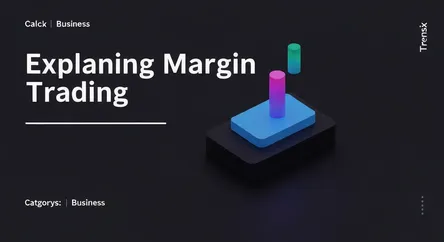Business
Explaining Margin Trading

Learn about margin trading, a high-risk, high-reward strategy of borrowing funds to purchase more securities than you could with your own capital.
What is it?
Margin trading is the practice of borrowing money from a brokerage firm to purchase stocks, options, or other financial assets. By using a 'margin account,' an investor can leverage their own capital to control a larger position than they could afford otherwise. The securities purchased in the account serve as collateral for the loan. This leverage can amplify both potential gains and potential losses, making it a high-risk strategy typically employed by experienced investors.
Why is it trending?
Margin trading has gained popularity with the rise of accessible online brokerage platforms and the increased volatility in both stock and cryptocurrency markets. Traders are drawn to the potential for magnified returns in short time frames, especially during strong market upswings. The ability for retail investors to easily open margin accounts has democratized access to this advanced trading tool, which was once primarily the domain of institutional investors and high-net-worth individuals.
How does it affect people?
Margin trading has a profound effect on an investor's financial risk profile. While it can lead to substantial profits if a trade moves in the right direction, it can also lead to losses that exceed the initial investment. If the value of the securities falls, the broker may issue a 'margin call,' demanding the investor deposit more cash or sell assets to cover the potential loss. Failure to meet a margin call can result in the broker liquidating positions at a loss, creating significant financial hardship.